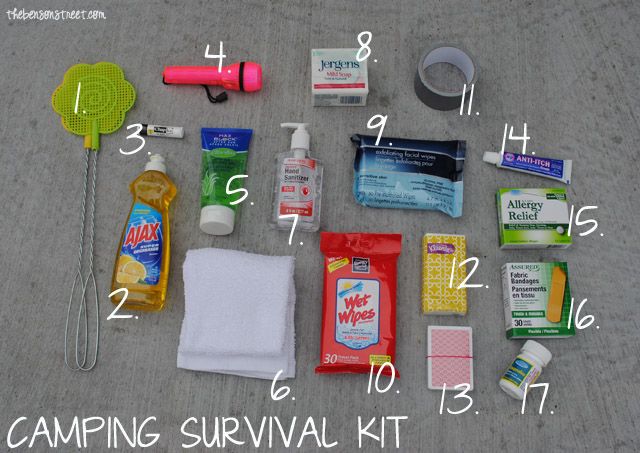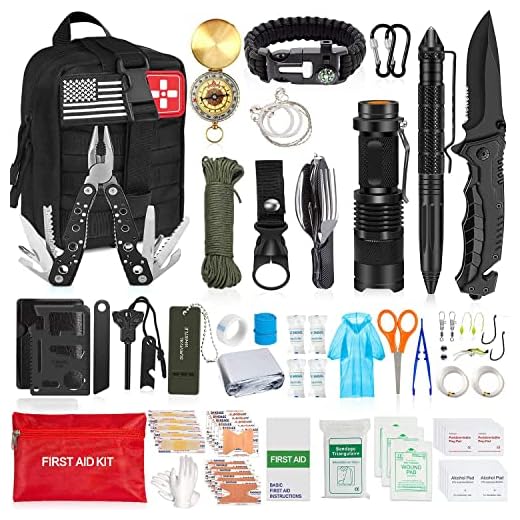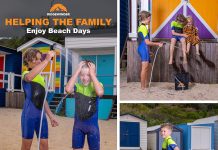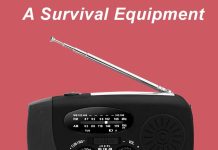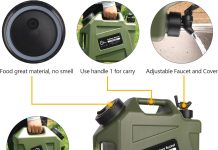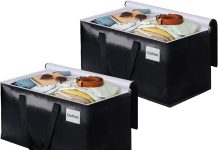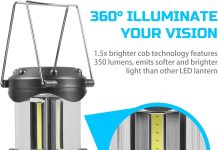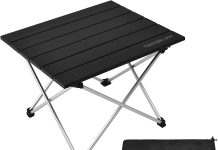Imagine you’re out outdoors, exploring nature and enjoying quality time camping.
But suddenly, disaster strikes, and you find yourself in need of emergency supplies.
Don’t worry; we’ve got you covered! In this article, we’ll explore what essential items you should have in your camping emergency kit to ensure your safety and peace of mind during unforeseen circumstances.
Whether it’s a medical emergency or severe weather conditions, having the right tools and supplies can make all the difference in the world.
So, let’s prepare and ensure your camping adventure is exciting and safe.
First Aid Supplies
Adhesive bandages
Adhesive bandages are an essential item to have in your camping emergency kit. They are perfect for treating minor cuts, blisters, and abrasions you might encounter during outdoor adventures. Make sure to pack a variety of sizes to be prepared for any situation.
Sterile gauze pads
Sterile gauze pads are crucial for cleaning and covering more extensive wounds. Whether it’s a sprained ankle or a deep cut, having sterile gauze pads in your kit will ensure you can properly clean and dress the wound, reducing the risk of infection.
Antiseptic wipes
When camping outdoors, it’s essential to keep wounds clean and bacteria-free. Antiseptic wipes are an excellent addition to your first aid supplies as they help prevent infection and promote healing.
Tweezers
Tweezers are a must-have tool for any camping emergency kit. They can remove splinters, thorns, or ticks from your skin. Make sure to pack a pair of high-quality tweezers that have a pointed end for precise removal.
Scissors
A pair of scissors in your camping emergency kit is essential for cutting adhesive bandages, gauze pads, and medical tape. Additionally, they can be handy for cutting through clothing or ropes in an emergency.
Medical tape
Medical tape is essential for securing bandages and dressing wounds. It provides a robust and reliable hold, ensuring your dressings stay in place even during physical activity. Pack a roll or two of medical tape to be prepared for any situation.
Pain relievers
A headache or muscle pain can quickly dampen your spirits when you’re out exploring the wilderness. Including pain relievers, such as ibuprofen or acetaminophen, in your camping emergency kit can help alleviate these discomforts and enable you to enjoy your camping experience fully.
Antihistamines
Allergy symptoms can strike any time, and when you’re out in nature, it’s essential to be prepared. Antihistamines can relieve allergy symptoms such as sneezing, itching, and watery eyes. Whether you’re allergic to pollen or insect bites, having antihistamines in your kit will help you manage any unexpected allergic reactions.
Thermometer
In case of illness or injury, having a thermometer in your camping emergency kit can help you monitor your body temperature. This is particularly important if you or a fellow camper are experiencing symptoms that may require medical attention. A quick and accurate temperature reading can guide your next steps in seeking appropriate care.
First aid manual
Even if you’re well-versed in first aid techniques, having a first aid manual in your camping emergency kit is always a good idea. It can serve as a reference guide, helping refresh your memory or guiding you through unfamiliar situations. Be sure to choose a manual that explicitly covers wilderness first aid to address any unique challenges you may encounter while camping.
Emergency Tools
Flashlight
A flashlight is an essential tool to include in your camping emergency kit. It can provide illumination during nighttime emergencies or situations where visibility is limited. Opt for a reliable and durable flashlight that is water-resistant, lightweight, and has a long battery life.
Extra batteries
Don’t get caught in the dark! Include extra batteries in your camping emergency kit to power your flashlight and other devices. Double-check the batteries’ compatibility with your devices before heading into the wilderness.
Whistle
A whistle is a simple yet effective tool for signaling for help in an emergency. It can be heard long distances, attracting attention and potentially leading rescuers to your location. Choose a whistle that is loud, lightweight, and preferably made of a waterproof material.
Signal mirror
A signal mirror is valuable for attracting attention and signaling for help over long distances. Its reflective surface can catch the sunlight and direct the reflection towards potential rescuers or passing aircraft. Look for a signal mirror that is lightweight, compact, and has a sighting hole for improved accuracy.
Multi-tool
A multi-tool is a versatile gadget that combines several useful tools into one compact device. It typically includes pliers, knives, screwdrivers, and other tools that can be useful in emergencies. From cutting through ropes to fixing gear, a multi-tool is a must-have item for any camping emergency kit.
Duct tape
Duct tape is renowned for its versatility and usefulness in various situations. Regarding camping emergencies, duct tape can be a true lifesaver. It can be used to repair gear, seal leaks, create makeshift splints, or even patch wounds temporarily. Pack a roll of duct tape in your kit to tackle unexpected challenges.
Rope or paracord
Having a length of rope or paracord in your camping emergency kit offers endless possibilities. From securing a shelter to creating makeshift splints or setting up a clothesline, a sturdy and reliable rope can be a valuable asset in survival situations. Choose a rope with a high weight capacity and consider packing different lengths for added flexibility.
Firestarter
Starting a fire can be vital in a camping emergency, providing warmth, cooking capabilities, and a light source. Pack waterproof matches, a lighter, or a fire starter in your emergency kit, such as a ferrocerium rod or magnesium fire starter. Before using them, familiarize yourself with fire safety practices and any fire restrictions in your camping area.
Emergency blanket
An emergency blanket, or a space blanket or thermal blanket, is designed to provide insulation and retain body heat in emergencies. It is lightweight, compact, and highly effective at protecting against hypothermia. Including one or more emergency blankets in your camping emergency kit ensures you’re prepared for sudden temperature drops.
Waterproof matches
In addition to a fire starter, pack a supply of waterproof matches in your camping emergency kit.
These matches are designed to withstand wet conditions, making them a reliable ignition source even in rainy or humid environments. Consider carrying them in a waterproof container to keep them dry and ready for use.
Communication Devices
Two-way radios
Having reliable communication devices in your camping emergency kit is essential for staying connected with your group or calling for help. Two-way radios enable clear communication over short distances, even without cell phone reception. Pack extra batteries or a charging cable to power the radios throughout your camping trip.
Cell phone
While cell phone coverage may be limited in remote camping areas, carrying a fully charged cell phone is still essential for emergencies. It can be used to call emergency services or communicate with rescue teams. Remember to preserve your phone’s battery by turning off unnecessary apps or using power-saving modes.
Portable charger
Include a portable charger in your emergency kit to keep your cell phone, two-way radios, or other electronic devices powered during your camping adventure. These compact devices can provide extra battery life when no electrical outlets are available. Choose a portable charger with a high capacity and consider its compatibility with your devices.
Emergency contact list
Compile a list of emergency contact numbers, including local emergency services, park rangers, and important contacts, such as family members or close friends. Keep this list in your camping emergency kit, ensuring that it is easily accessible in case of an emergency. Consider storing copies of these numbers in your cell phone and a waterproof document holder.
Signal flares
Signal flares are an evident and effective way to attract emergency attention. They can help rescuers identify your location, especially in low-light or foggy conditions. Check the expiration date on your signal flares regularly and store them in a waterproof container for protection against moisture.
Emergency whistle
Including an emergency whistle in your camping emergency kit is an additional, reliable method to signal for help. A loud whistle can carry long distances, even in challenging weather conditions. Attach the whistle to your backpack or keep it within reach for quick access during an emergency.
Shelter and Warmth
Tent
A sturdy and reliable tent is essential for providing shelter and protection from the elements during your camping trip. Consider the tent’s size, weight, and durability when choosing one for your camping emergency kit. Look for features such as waterproof materials, reinforced seams, and a quick and user-friendly setup.
Sleeping bags
A high-quality sleeping bag is a vital component of any camping emergency kit. It provides insulation and warmth during cold nights, ensuring a restful sleep and protection against hypothermia. Choose a sleeping bag that suits the expected temperatures of your camping area and consider factors such as weight, packability, and insulation type.
Sleeping pads
Sleeping pads, also known as camping mats or mattresses, offer comfort and insulation when sleeping on the ground. They provide a cushioned barrier between you and the cold or uneven terrain, improving the quality of your sleep. Look for sleeping pads that are lightweight, durable, and preferably self-inflating for ease of use.
Emergency bivvy
An emergency bivvy, short for bivouac sack, is a lightweight and compact shelter designed for emergency situations. It offers a waterproof and windproof layer, providing additional protection and warmth when unexpected circumstances arise. Including an emergency bivvy in your camping emergency kit is a wise precaution.
Emergency shelter
In addition to a tent, consider including an emergency shelter in your camping emergency kit. These shelters are typically lightweight, compact, and easy to set up. They can serve as a backup option or temporary shelter during emergencies or unexpected changes in weather conditions.
Hand warmers
Hand warmers are small packets that generate heat when activated, providing temporary warmth in chilly conditions. They can be a welcome addition to your camping emergency kit, especially when dealing with cold extremities or unexpected temperature drops. Choose hand warmers that are easy to activate and provide long-lasting heat.
Poncho
A poncho is a versatile piece of clothing that can protect you from rain and provide warmth when layered over other garments. It can also serve as a makeshift shelter or ground cover if necessary. Look for a lightweight, waterproof poncho that is compact and easy to pack in your camping emergency kit.
Emergency candles
Emergency candles are slow-burning candles designed for extended use during emergencies or power outages. They provide a reliable light source and can help generate warmth in a confined space. When including emergency candles in your camping emergency kit, ensure they are stored in a waterproof container to prevent damage.
Extra clothing
Extra clothing in your camping emergency kit can make a significant difference in maintaining comfort and warmth during unexpected situations. Pack additional layers, such as thermal tops, extra socks, and a warm hat, to ensure you can layer up as needed. Consider your camping trip’s potential weather conditions and duration when choosing your extra clothing.
Rain gear
Rain gear, including a waterproof jacket and pants, is an essential component of your camping emergency kit.
It will protect you from getting soaked during rain showers and prevent hypothermia by keeping you dry. Look for rain gear that is breathable, lightweight, and easy to pack for maximum convenience.
Food and Water
Non-perishable food
Including a supply of non-perishable food in your camping emergency kit ensures sustenance during emergencies or extended periods in the wilderness. Choose easy-to-prepare or consume without cooking, such as energy bars, dried fruits, canned goods, and freeze-dried meals. Consider individual dietary restrictions or preferences when selecting your food items.
Water bottles
Staying hydrated is crucial during any outdoor adventure. Pack durable and reusable water bottles in your camping emergency kit to ensure access to clean drinking water. Look for bottles with a high capacity and consider adding a hydration bladder to your kit for additional water storage.
Water filters or purification tablets
Having a reliable method to purify water is essential when camping or facing emergencies in the wilderness. Water filters or purification tablets can effectively remove bacteria, parasites, and other contaminants from natural water sources. Research and select a water purification method that suits your needs, considering the availability of water sources in your camping area.
Waterproof container
Storing your food and water in a waterproof container is crucial to protect them from moisture and potential contamination. Choose a container with a secure lid or seal to prevent leaks and ensure the preservation of your supplies. Additionally, consider the size and portability of the container for your camping equipment.
Can opener
If your non-perishable food items require a can opener, include one in your camping emergency kit. Opt for a compact and lightweight can opener that can easily fit into your kit or attach to a keychain. It’s a small tool that can save you from the frustration of being unable to access your food.
Cooking utensils
If you plan on cooking or heating food during your camping trip, including cooking utensils in your emergency kit is essential. Pack a lightweight and compact set of utensils, such as a camping stove, pots, pans, a spatula, and a multipurpose knife. Consider the types of meals you may be preparing and ensure your utensils suit those cooking methods.
Firewood or fuel
If you intend to rely on a campfire or stove for cooking and warmth, ensure you have an adequate supply of firewood or fuel in your camping emergency kit. Depending on the regulations and availability in your camping area, pack enough firewood or fuel to meet your anticipated needs. Always observe fire safety practices and respect any fire restrictions in place.
Mess kit
A mess kit is a compact set of eating and cooking utensils for outdoor use. Including a mess kit in your camping emergency kit ensures you have the necessary meal preparation and consumption tools. Look for mess kits that are lightweight, durable, and include features such as foldable handles or nesting components for easy storage.
Energy bars
Energy bars are convenient and nutrient-dense snacks that provide quick energy during emergencies or physically demanding situations.
Pack various energy bars in your camping emergency kit, considering caloric content, flavor preferences, and dietary restrictions.
Emergency drinking straw
Emergency drinking straws, or water filtration straws, are portable devices that filter contaminants from water as you drink.
Including one or more emergency drinking straws in your camping emergency kit can provide an added layer of protection during emergencies or situations where access to clean water is limited.
Hygiene and Sanitation
Toilet paper
Toilet paper is essential, especially in camping areas without dedicated restroom facilities. Include a small roll or pack of toilet paper in your camping emergency kit to ensure proper hygiene and comfort when nature calls. Place it in a waterproof bag to protect it from moisture.
Hand sanitizer
Proper hand hygiene is crucial, especially when access to clean water and soap is limited. Include a travel-sized bottle of hand sanitizer in your camping emergency kit to ensure cleanliness and prevent the spread of germs. Look for hand sanitizers with a high alcohol content for maximum effectiveness.
Biodegradable soap
Opt for biodegradable soap if you need to wash dishes, laundry, or your body during your camping trip. This type of soap is formulated to break down naturally in the environment, minimizing harm to plants, animals, and water sources. Choose a biodegradable soap that suits your needs and follows the Leave No Trace principles.
Trash bags
Pack a few extra sturdy trash bags in your camping emergency kit to help manage waste and maintain cleanliness. They can collect and store any garbage you generate during your trip. Consider choosing trash bags with closure mechanisms like drawstrings or zip ties to prevent leaks and contain odors.
Feminine hygiene products
Including an ample supply of feminine hygiene products in your camping emergency kit is essential for menstruating individuals. Whether it’s tampons, pads, or menstrual cups, ensure you have enough to last throughout your trip. Consider the duration of your camping trip and your preferences when selecting your feminine hygiene products.
Personal medications
If you rely on any prescription medications or have specific over-the-counter medications, be sure to include them in your camping emergency kit.
Pack a sufficient supply to last your trip, plus a few extra days in case of unforeseen circumstances or delays. Keep the medications in their original containers and store them in a waterproof bag or container.
Insect repellent
Protect yourself from pesky insects by including insect repellent in your camping emergency kit.
Mosquitoes, ticks, and other biting insects can be a nuisance and carry diseases. Look for a repellent that contains effective ingredients, such as DEET or picaridin, and consider your camping area’s specific insect concerns.
Sunscreen
Even in cloudy weather, sun protection is crucial to prevent sunburn and long-term damage to your skin. Pack a broad-spectrum sunscreen with a high SPF in your camping emergency kit. Apply it before heading outdoors and reapply regularly throughout the day, especially after swimming or excessive sweating.
Towel
Including a quick-drying and lightweight towel in your camping emergency kit has multiple benefits. It can be used for personal hygiene, drying off after swimming, or as a makeshift bandage or sling. Look for towels made from microfiber or other fast-drying materials to save space and ensure practicality.
Toothbrush and toothpaste
Maintaining good oral hygiene is essential even when camping. Include a travel-sized toothbrush and toothpaste in your camping emergency kit to ensure you can maintain fresh breath and clean teeth.
Consider packing toothbrush covers or a small container to keep your toothbrush clean and separate from other items.
Navigation and Signaling
Compass
A compass is a tried-and-true navigation tool that can help you find your way when hiking or exploring unfamiliar terrain. Including a compass in your camping emergency kit is essential for orienting yourself and avoiding getting lost. Familiarize yourself with how to use a compass before venturing into the wilderness.
Topographic map
Coupled with a compass, a topographic map can be a valuable navigation tool in the backcountry. Topographic maps provide detailed information about the terrain, elevation, water sources, and other critical features of the area you’re exploring. Pack a topographic map of your camping area and learn how to read it effectively.
GPS device
While traditional compasses and topographic maps are reliable navigation tools, a GPS device can provide additional accuracy and real-time information. Including a portable GPS device in your camping emergency kit can give you peace of mind, especially if you’re venturing into remote or challenging environments. Ensure the device is adequately charged and familiarize yourself with its functions.
Whistle or signal mirror
In addition to the whistle and signal mirror sections covered earlier, consider packing one or both of these items separately for additional redundancy and flexibility in signaling for help. Multiple signaling options can increase your chances of being noticed in emergencies.
Marker tape
Carrying marker tape in your camping emergency kit can help mark trails, campsites, or other vital locations.
It can help you navigate back to key points or guide rescue teams to your location if necessary. Look for marker tape that is bright and highly visible, even in low-light conditions.
Emergency whistle
In addition to the whistle section covered earlier, including an extra emergency whistle in your camping emergency kit can serve as a backup or be used by other group members. It enhances your signaling capabilities and can be particularly useful when group members are separated or need to attract attention simultaneously.
Fluorescent flagging tape
Fluorescent flagging tape is a brightly colored and evident tape that can be tied to trees or other objects to mark trails or essential locations. Including fluorescent flagging tape in your camping emergency kit provides an additional option for marking routes or alerting others to hazards or directions.
Emergency strobe light
An emergency strobe light is a bright, flashing light that can attract attention in low-light or nighttime situations. It is highly effective at catching the attention of rescuers or passing aircraft. Pack an emergency strobe light in your camping emergency kit for enhanced visibility during emergencies.
Portable GPS
If you rely heavily on GPS technology for navigation, packing a portable GPS device as a backup in your camping emergency kit can provide additional reassurance.
It can serve as a spare device or an alternative navigation tool in case of GPS signal loss or device failure. Make sure to keep the device charged and updated with the relevant maps.
Miscellaneous Supplies
Emergency cash
Including a small amount of emergency cash in your camping emergency kit can be helpful in situations where electronic payment methods are not available or reliable. Keep the cash in a waterproof container or bag for protection against moisture.
Identification documents
Copying your identification documents in your camping emergency kit can be essential to provide identification or complete any official paperwork during an emergency. Include copies of your driver’s license, passport, and other relevant identification documents. Store them in a waterproof document holder or bag.
Pen and notepad
A pen and notepad are simple yet valuable tools, especially during emergencies. They can be used to jot down important information, leave notes for fellow campers or rescue teams, or record any vital details related to the emergency. Keep them in a waterproof bag or container to protect them from moisture.
Spare keys
Including spare keys in your camping emergency kit can prevent a lot of frustration in case of misplaced or lost keys. Consider including spare keys for your vehicle, home, or any other belongings you may have with you. Store them securely in a waterproof container or bag.
Safety pins
Safety pins are small yet versatile tools that can be valuable in various emergencies. They can repair gear, secure bandages, or even create makeshift fishing hooks. Pack a few safety pins of different sizes in your camping emergency kit for added flexibility.
Ziplock bags
Ziplock bags are incredibly versatile and practical for camping emergencies. They can be used for waterproof storage, organizing small items, or isolating wet, dirty, or contaminated items.
Pack a selection of different-sized ziplock bags in your camping emergency kit to meet your specific needs.
Emergency radio
Including an emergency radio in your camping emergency kit can provide you with updates and critical information during emergencies or severe weather events.
Look for an emergency radio that features AM, FM, and NOAA weather radio frequencies. Ensure the radio is battery-powered or has a hand-crank option for reliable operation.
Sewing kit
A compact sewing kit can be a lifesaver when repairing gear, clothing, or equipment during emergencies. Include a selection of needles, thread, buttons, and safety pins in your camping emergency kit. Opt for a compact and lightweight sewing kit that won’t take up much space in your kit.
Cloth or duct tape
In addition to the duct tape section covered earlier, a small piece of cloth or duct tape in your camping emergency kit can be helpful for various repairs or improvised solutions.
Cloth or duct tape can patch holes, secure loose gear, or temporarily fix broken equipment.
Backup power source
Carrying a backup power source, such as a portable battery pack or a solar charger, can ensure you have power for essential electronic devices during emergencies.
This backup power source can charge your cell phone, GPS device, or other battery-powered tools. Consider your devices’ power capacity and compatibility when selecting a backup power source.
Personal Protection
Bug spray
Protecting yourself from bugs and insects is crucial when camping, especially in areas with known pest problems. Including bug spray in your camping emergency kit will help keep these pesky creatures at bay, allowing you to enjoy the great outdoors without constant annoyance or the risk of bites and illnesses.
Bear spray
If you’re camping in bear country, bear spray is essential in your camping emergency kit. Bear spray is a specialized pepper spray that can deter aggressive bears in a defensive encounter. Familiarize yourself with the proper use and regulations regarding bear spray before venturing into bear habitats.
Portable safety whistle
In addition to the whistle and emergency whistle sections covered earlier, including a portable safety whistle in your camping emergency kit can be valuable for personal protection. It can be used to deter animals or unwanted visitors and alert others in case of an emergency.
Emergency mask
Wearing an emergency mask can help protect your respiratory system from hazardous particles or toxic fumes during particular emergencies, such as wildfires or chemical spills. Including a pack of emergency masks in your camping emergency kit ensures you’re prepared for such situations.
Emergency poncho
In addition to the poncho section covered earlier, including an emergency poncho in your camping emergency kit can provide added protection from the elements during unexpected weather changes or emergencies. It can keep you dry and shielded from rain or wind, enhancing your comfort and safety.
Safety glasses
If you’re engaging in activities that pose a risk of eye injury, such as chopping wood or hammering stakes, including a pair of safety glasses in your camping emergency kit is a sensible safety precaution. Ensure the safety glasses offer adequate eye protection and are comfortable to wear for extended periods.
Hand sanitizer
In addition to the hand sanitizer section covered earlier, having an extra travel-sized bottle of hand sanitizer in your camping emergency kit can prove invaluable for personal hygiene in emergencies. It can help reduce the spread of germs, particularly when handwashing facilities are unavailable.
Protective gloves
Including protective gloves in your camping emergency kit is essential for various tasks encountered during emergencies or while exploring the outdoors. They offer protection against cuts, abrasions, or contact with hazardous materials. Choose durable, comfortable, and suitable gloves for your intended activities.
Reflective vest
A reflective vest is essential to your camping emergency kit, especially if you plan hiking, biking, or navigating busy areas. It enhances your visibility to motorists and other outdoor enthusiasts, reducing the risk of accidents or collisions. Choose a high-visibility vest that fits well and meets relevant safety standards.
Knife or multi-tool
In addition to the multi-tool section covered earlier, including a knife or multi-tool in your camping emergency kit is essential for various tasks, from food preparation to handling emergencies. Choose a reliable, high-quality knife or multi-tool that suits your needs and includes essential features such as blades, pliers, and screwdrivers.
Essential Documents
Identification cards
In addition to the identification documents section covered earlier, including your identification cards, such as driver’s license, passport, or ID cards, in your camping emergency kit is essential. Carry these cards with you at all times, as they may be required for identification purposes during emergencies or interactions with authorities.
Insurance information
Having copies of your insurance information in your camping emergency kit can be crucial during emergencies that require medical assistance or property claims. Include copies of health insurance cards, vehicle insurance cards, or other relevant documents. Keep them in a waterproof container or bag for protection.
Emergency contact numbers
In addition to the emergency contact list section covered earlier, compiling a list of emergency contact numbers is vital for quick and efficient communication during emergencies. Include essential numbers such as local emergency services, family members, close friends, and insurance companies. Keep this list easily accessible in your camping emergency kit.
Medical records
Having copies of your medical records in your camping emergency kit can significantly streamline receiving proper medical care. Include relevant medical documents, such as allergies, pre-existing conditions, prescriptions, or recent test results. Store them securely in a waterproof document holder or bag.
Proof of vaccination
Including proof of vaccination records in your camping emergency kit can be valuable in situations where it is necessary to demonstrate immunity or undergo medical treatment. This is particularly important when traveling to areas with specific vaccination requirements or during disease outbreaks. Ensure your vaccination records are up-to-date and easily accessible.
Copy of itinerary
Having a copy of your camping trip itinerary in your emergency kit can be helpful in emergencies where you may need to communicate your whereabouts or provide information for rescue teams. Include camping locations, planned routes, and estimated return dates. Keep this copy in a waterproof document holder or bag.
Emergency cash
In addition to the emergency cash section covered earlier, including a stash of emergency cash in your camping emergency kit is essential in case of unexpected financial needs or emergencies that require immediate payment. Keep the cash in a waterproof container or bag for added protection.
Survival Kit, 250Pcs Survival Gear First Aid Kit with Molle System Compatible Bag and Emergency Tent, Emergency Kit for Earthquake, Outdoor Adventure, Hiking, Hunting, Gifts for Men Women
$42.99 in stock
200Pcs Emergency Survival Kit and First Aid Kit Professional Survival Gear SOS Emergency Tool with Molle Pouch for Camping Adventures (Black)
238Pcs Emergency Survival Kit and First Aid Kit, Professional Survival Gear Tool with Tactical Molle Pouch and Emergency Tent for Earthquake, Outdoor Adventure, Camping, Hiking, Hunting
$35.99 in stock




